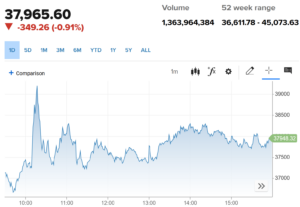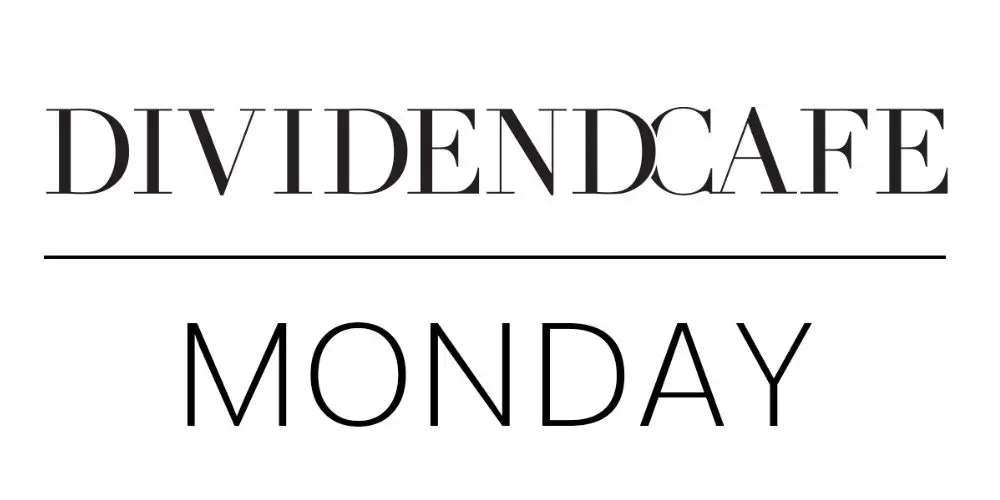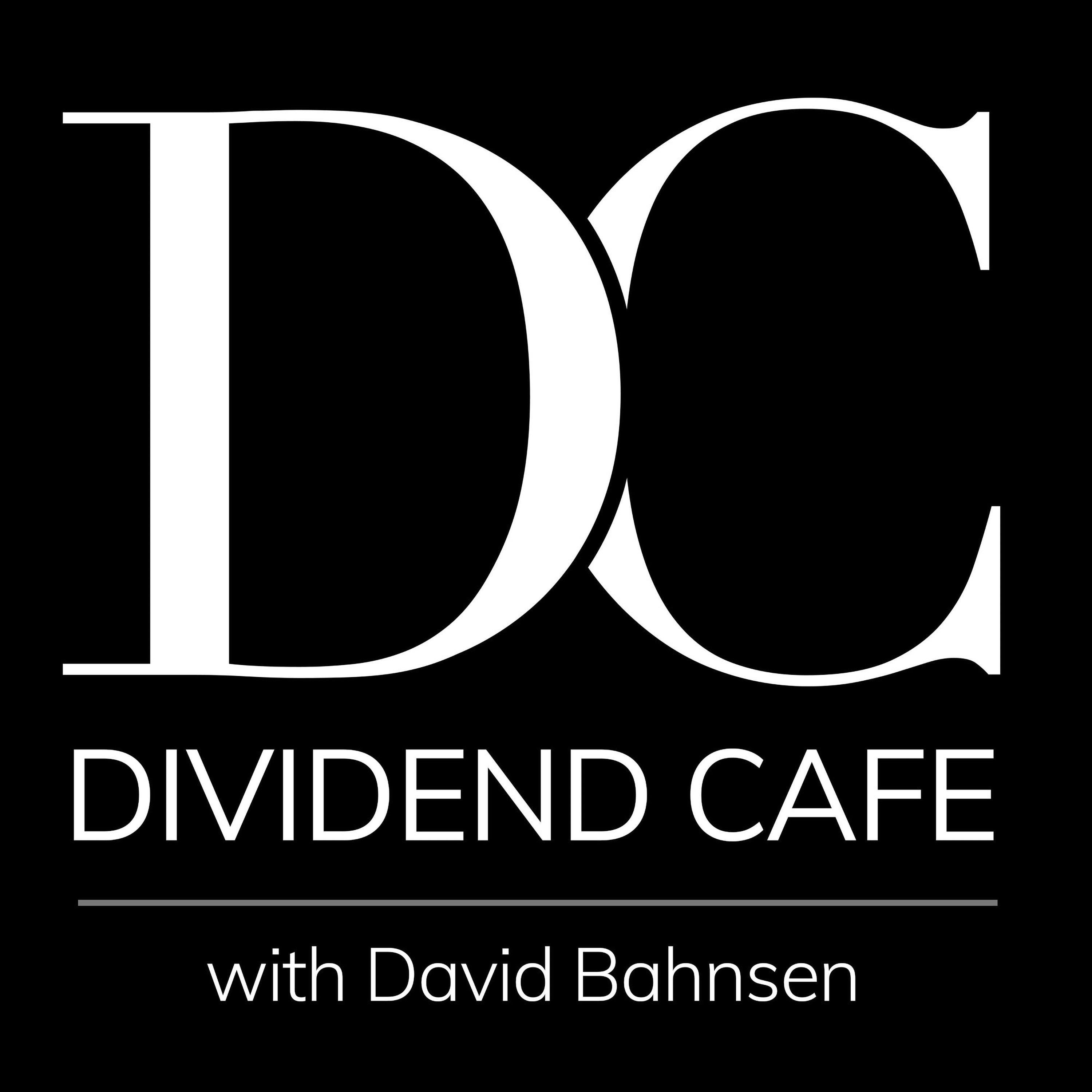Dear Valued Clients and Friends –
The markets were all over the place today after the two-day rout of Thursday and Friday, as the Trump/tariff/trade tumult has led to what most would consider a bear market. As it turns out, the S&P 500 today was, intra-day, down 21.3% from its February high, but on a “closing day to closing day” basis is “only” down 17.6%. So, all of that semantical nonsense aside, markets have been in pure sell-off mode, and I will try to cover as much as I can today (even if outside much of our normal categories and conventions).
Dividend Cafe on Friday was a candid and objective dissection of the tariff announcements made by President Trump last week. It was a sobering assessment of the situation as it stands for the economy, along with my own view of possible ways this all plays out. The written version is here, and this was one where the written version captured what I had to say best. The video is here and the podcast is here.
Off we go …
|
Subscribe on |
Market Action
- Futures last night got down 1,600 points on the Dow with S&P and Nasdaq futures down over -5% piling on the market rout of late last week. The Nikkei in Japan was down nearly -8%, Hong Kong markets down a stunning -13%, and Chinese markets down around 10%.
- The U.S. markets opened today down over a thousand points, rallied higher on false rumors of a tariff pause, then substantially zigged and zagged throughout the day. The chart does not graphically do justice to the numerical reality of up/down movements around the day’s action.

*CNBC, DJIA, April 7, 2025
- The very easy story of much of today’s trading action is that markets on Friday and into today now see forced sellers having to sell the stuff that has not been down much to deal with the stuff that has been down a lot. With many of the biggest companies in the world down 30-45% from their recent highs, today we saw some things up on the year, or barely down, sell off a bit. This is what we refer to as a margin call, and it appears to have moved from that stage of selling what one wants to sell, to selling what they ought to sell, to selling what they have to sell.
- There is severely mixed messaging coming from the White House right now and what different economic advisors are saying (from Treasury, to Commerce, to NEC, to “special advisors” to the President) do not always line up with each other. This does not provide clarity for markets, to say the least.
- The ten-year bond yield closed today at 4.20%, up a violent 21 basis points on the day. It had briefly gotten into the 3.85% range on Friday. Bond-selling is connected to the “sell what you can sell, not what you want to sell” theme of my top bullet point above under the daily Dow chart.
- Top-performing sector for the day: Communication Services (+1.03%)
- Bottom-performing sector for the day: Real Estate (-2.40%)
- Why is the Mag-7 hit so especially hard since this Trump-Tariff rout began? 50% of their earnings come from overseas, for one. Their beginning valuations were highly elevated, for another.
- The average stock in the market is down -26% from its 52-week high, so even as the market is not technically down -20% the market itself, is. And while the S&P has held above bear market labeling (technically) on a “closing day” basis, the Nasdaq is down over -22% from its mid-February high.
- It is hard to fathom what might happen to earnings revisions as we get ready to go into earnings season next week but it is important to remember that this will be the least reliable earnings guidance we have gotten since COVID. Companies cannot possibly guess right now what the impact to their full-year earnings results are going to be.
- For S&P 500 investors, at one point this morning the market was where it was in January of 2022, a 40-month period of a dead flat return (book-ended by the big drop in 2022 and the big-drop of the last six weeks, with big up periods in between in 2023 and 2024).
Public Policy
- The bulk of the media and investor attention seems to be focused on “what is President Trump’s next move going to be.” The Friday market sell-off was certainly “day two” of the Trump/trade/tariff debacle, but it was more specifically connected to China’s unsurprising announcement of 34% retaliatory tariffs against President Trump’s 34% tariff announcement from Wednesday. I would like to suggest that where things sit with China is a shockingly underappreciated part of this whole story. I suppose the irrationality of escalating tariffs with no/low tariff countries like Switzerland and Vietnam has been especially troubling for markets, but the consequences with China economically and geopolitically are deep and wide. Some takeaways from weekend research deep dive I feel compelled to share:
- China has no attention of taking this lying down, and vehemently disagrees that they have a losing hand in the way these things play out.
- While President Trump has extended the delay on a Congressionally-passed TikTok ban once again, indications are that China has pulled back from any divestiture discussions whatsoever.
- The U.S. feels it has the upper hand. China feels it has the upper hand. I believe each society has very different thresholds for tolerance of economic pain and uncertainty.
- An underrated issue in the midst of this tariff war is that downward pressure on President Trump’s popularity and approval also puts downward pressure on his political capital with House and Senate GOP votes needed with the razor-thin majorities they have for a tax/reconciliation bill. Skeptical legislators were by no means a sure thing when the President was at peak approval and popularity; a bear market/recession President is much, much easier to part ways with when it comes to elements of a tax/budget bill that is surely going to have things in it that many people will dislike.
- The latest report coming across my desk is that the administration wants a SALT deduction of $25,000 in the new tax bill, up from the current $10,000. There is no way to know if this survives, if it is unwelcome by those House Republicans not in high-tax blue states.
Economic Front
- Hotel bookings have started to modestly decline but it is way too early for me to extrapolate real meaning from this. Other anecdotal things like bankruptcy filings and movie theater visits are also lumpy and not likely a by-product of this trade war (I have always felt when there isn’t a global pandemic shutting down movie theaters that one of the biggest causes of low movie ticket sales is … BAD MOVIES).
- I am unclear as to whether or not everyone knows that, all talk about manufacturing aside (a conversation filled with its own fallacies and misunderstandings), we cannot manufacture coffee, bananas, spices, and a vast array of consumer staples here in the United States. Price inflation at the grocery store is perhaps the largest political liability.
Federal Reserve
- A full 1% additional cut in the fed funds rate is now 75% priced into the futures market by December, and there is a 38% chance of five cuts between now and year-end.
- We have gone from one cut priced in three months ago to two cuts two months ago to three cuts one month ago to four cuts now. And none of it for good reasons.
Oil and Energy
- WTI Crude closed at $60.96, up +0.43% on the day but down -12.4% on the year
- The global rout in oil prices that has brought oil to $60 is the exact opposite reason one would want oil prices down – not on increased and improved supply but on expectations for demand deterioration in a recession. And with OPEC+ able to press here, as we have learned several times in the last 10-12 years, U.S. producers do not get to easily reconcile supply and demand by curtailing their own production, when OPEC+ can press supply even as demand softens.
Ask TBG
| “My initial take is that the Fed has to stand pat for a bit. Probably at least until the June meeting. I’m more interested in your outlook than mine or these guys. ~ Chris T |
| Futures say there is a little over 50% chance they cut in May. I believe they will cut in May but not before that meeting. If you mean what they will do, that is my call – likely but not for sure in May; almost for sure in May. If you meant what they should do, I think it all depends on what one believes the Fed is there to do. In their present role as alleged stabilizer of the economy, they will be needing to cut, soon, when the impact of this tariff uncertainty hits their economic metrics. For now, it is just markets telling them what is going to happen. I always follow markets over Ph.D, especially economics Ph.D’s. |
| “A friend had claimed that tariffs could be used to reduce our budget deficit. I was wondering if other than effectively acting as a pre-consumer sales tax, is there any macroeconomic impact that could be construed as helping to reduce the deficit or debt situation?” ~ John B. |
| Not even a little bit. Whatever revenue that does come in will be more than offset by declining revenues from income and investment (and then some). But it is crucial to point out – this is the EXACT OPPOSITE of what the administration has said their whole point is!! They say they want manufacturing jobs re-domesticated, so if the those jobs come back onshore there wouldn’t be tariff revenue, would there? My view is that you get neither: No additional net revenue as declining economic output hurts all income and investment base, and no additional jobs as potentially helping one sector merely hurts another (services, exporters, etc.). |
On Deck
- I plan on extensive “What’s on David’s Mind” updates and more “Ask TBG” than normal over the next couple of days.
- Friday’s Dividend Cafe will deal with the most important thing any investor can possibly read right now.
I am not getting off my keyboard a lot right now and I am determined to answer questions that are on your mind. Our advisors are here for you in any way you need.
The one thing you may want to know (“what is President Trump going to do here?”) we can’t answer, and I am as positive as I have ever been that no one around him knows either.
The one thing you need to know, “am I going to be okay?” – we can answer with an unambiguous “Yes!” To that end we work.
With regards,
David L. Bahnsen
Chief Investment Officer, Managing Partner
The Bahnsen Group
www.thebahnsengroup.com
The Dividend Cafe features research from S&P, Baird, Barclays, Goldman Sachs, and the IRN research platform of FactSet.












